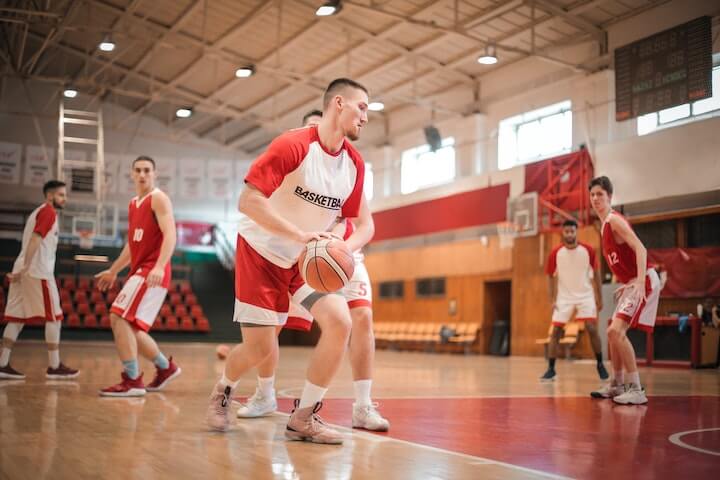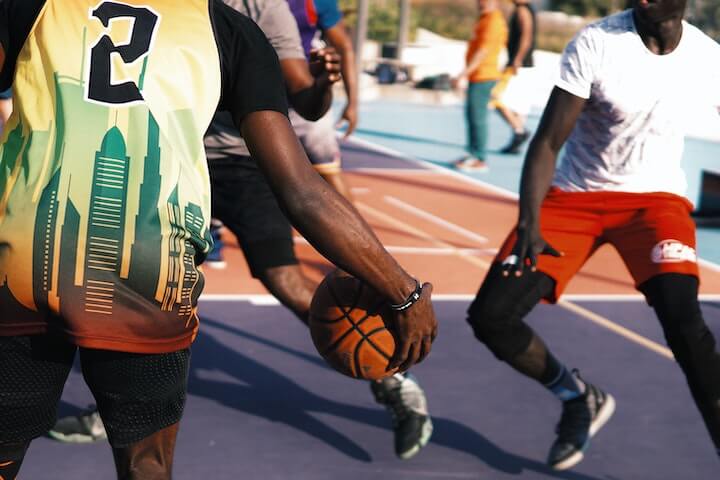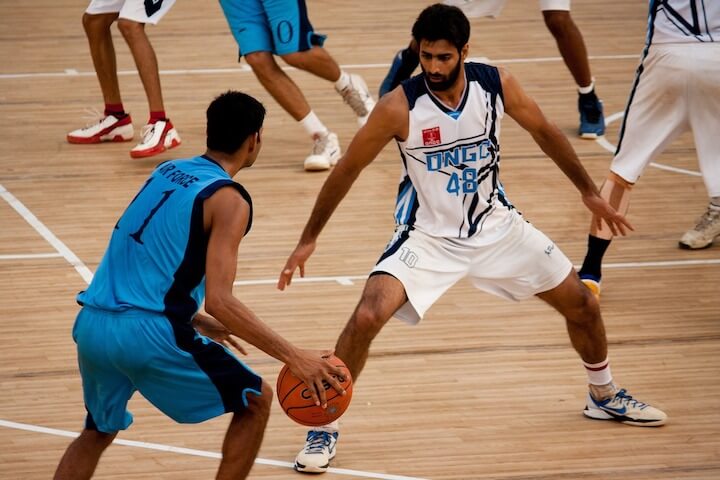A turnover in basketball refers to when the offensive team loses possession of the ball to the opposing team before attempting a shot that would end team control. This typically happens due to violations or errors, such as dribbling mistakes, inaccurate passes, or other on-court blunders. Turnovers can significantly impact a game, as they give the opposing team an opportunity to score.
How do Turnovers Occur?

There are two primary ways a player can commit a turnover:
-
Violation
A violation happens when an offensive player breaks a rule, causing the referee to stop play and give the ball to the opposing team.
Common violations include: traveling, double dribble, carrying, out of bounds, 3-second violation, 5-second violation, 10-second violation, backcourt violation, shot clock violation, illegal screen, or charging. -
Player Errors
Turnovers also occur due to player mistakes, where the ball is simply handed over to the other team.
These errors usually happen while dribbling or passing. Players may lose possession through poor dribbling, a bad pass that’s intercepted, or a fumble that results in the defense gaining the ball.
What Is the Penalty for a Turnover?

A turnover results in the loss of possession, with the opposing team taking over on offense. The way the defense gains possession depends on the type of turnover.
-
Dead Ball Turnover
This type of turnover occurs after a violation, such as traveling, double dribbling, or an out-of-bounds call. When a violation occurs, the defense does not immediately gain possession. Instead, they must inbound the ball from the sideline or baseline closest to where the violation happened. This allows the team that committed the violation a chance to reset, but the defense gets a fresh opportunity to control the game. -
Live Ball Turnover
Live ball turnovers occur due to errors made during dribbling or passing, like a bad pass or a stolen ball. In this case, the defense immediately gains possession of the basketball, often leading to a fast break or transition offense. There’s no reset, so the defense has the chance to capitalize on the error and push for a quick score, exploiting the opportunity before the offense can recover.
In both cases, turnovers shift control of the game, but the timing and circumstances differ.
Teaching Players to Avoid Turnovers

Every basketball coach knows that turnovers are a major frustration. To help reduce turnovers and improve your team’s ball control, here are some key strategies to focus on:
-
Dribbling Focus
Dribbling drills are essential, no matter the player’s age. Emphasize weak-hand development to prevent defenders from easily predicting moves. Practicing dribbling in both directions reduces dribbling turnovers significantly. To make dribbling skills more game-like, always incorporate defenders in your drills. While basic stationary drills are important for beginners, real-game situations are necessary for players to apply these skills under pressure. One-on-one drills are particularly effective for enhancing ball-handling. -
Live Passing Drills
Just like dribbling, passing must be practiced against live defense. Start with partner passing, but quickly transition to drills involving real defenders. This will teach players when and where certain passes work, while also highlighting the importance of pass fakes—an essential skill for avoiding turnovers. -
Overloaded Drills
Overloaded drills force the offense to face more defenders than usual, improving passing accuracy, movement off the ball, and decision-making under pressure. These drills simulate tougher game situations, boosting players’ confidence and composure when facing defensive pressure.
Conclusion
There’s nothing more frustrating for an offensive team than a turnover. Whether caused by a violation or a player mistake, losing possession and missing a scoring opportunity can spell disaster. While it’s impossible to eliminate turnovers completely, there are steps you can take to minimize them.
Focusing on live dribbling and passing drills will significantly improve your team’s ability to protect the ball. By simulating game situations with defenders, players learn to handle pressure, make smarter passes, and move with purpose. As your team’s ball-handling and decision-making improve, turnover numbers will decrease, giving your team more opportunities to score and stay in control of the game.
